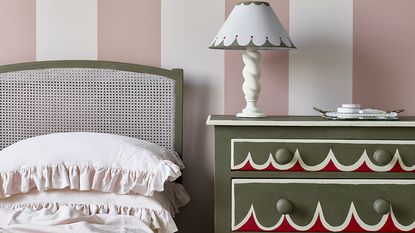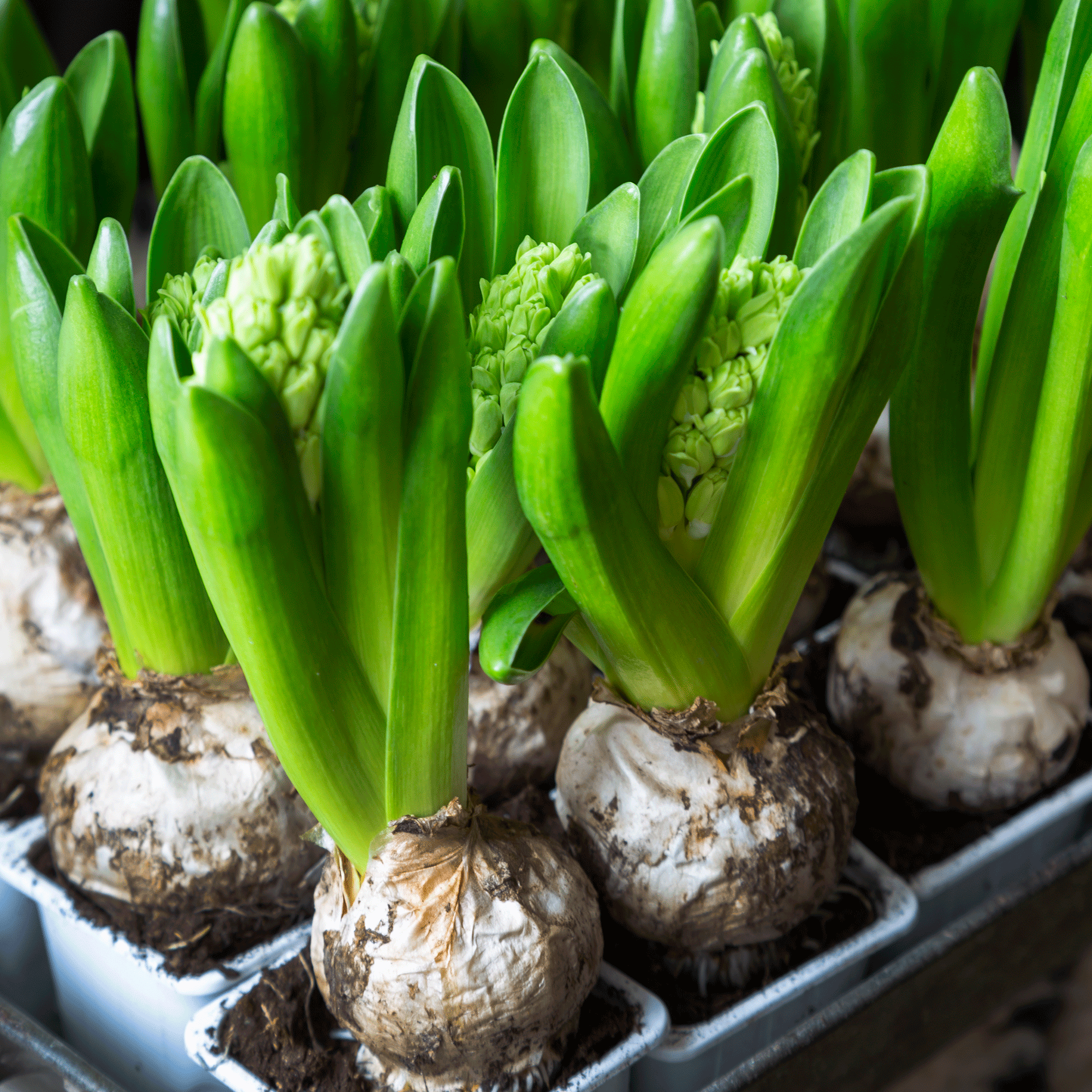Best paint for furniture – 9 quick and easy paints for upcycling
Give your tired furniture a new lease of life with the best paints for furniture

The best paint for furniture can easily transform tired or dated wooden furniture, giving it an instant uplift. In fact, upcycling is a quick, affordable and sustainable solution for revamping your interiors on a budget; all without having to buy brand new furniture!
Whether you want to spruce up an old table, chest of drawers, or a wardrobe, the best paint for furniture will enable you to get creative and craft your own one-of-a-kind pieces.
But with so many different types of furniture paint on the market, it can be tricky to know which option would best suit your DIY project. From the choice between eggshell and satin finish, to whether you should opt for an oil or water-based type, choosing the best paint for the task at hand will make all the difference to your overall look.
You can even give your kitchen a budget makeover with some of the latest paint options; if you're up for a bigger job check out our guide to the best paint for kitchen cabinets to undertake an affordable transformation.
But if it's an upcycling job you're looking to do, read on to find the Ideal Home team's pick of the best paints for furniture...
The best paint for furniture 2024
Why you can trust Ideal Home

If you want to spruce up furniture that's made from melamine - as well as wooden furniture - then Ronseal One Coat Cupboard & Melamine Paint is a great option. Specifically formulated to adhere to melamine surfaces, this paint is easy to apply with a brush in just one coat. While you don’t need a primer, it’s best to apply two coats if you are painting over a dark colour with a lighter tone. It's worth noting that we found this paint takes a lot longer to dry than other paints, and you need to allow between 12-24 hours drying time before applying another coat. But the smooth coverage and professional-looking sheen make it worthwhile.

If you don't fancy a gloss or satin sheen to your furniture makeover then B&Q's GoodHome Flat Matt Furniture Paint is a durable and hardwearing matt option. It's formulated to be resistant to water and household cleaners, which can be rare in a matt paint, so is useful for furniture that's likely to be in need of a freshen up from time to time. It's a self-priming paint, so you won't need to buy a separate primer, and offers good value for money with excellent coverage - although just note the price shown is for a 500ml tin rather than 750ml like most of our other options.

If you’re after a shabby chic look, then Annie Sloan's Chalk Paint has become one of the go-to brands for a distressed or vintage look. Hugely popular for furniture upcycling, the thick paint formula creates a rustic look where brush marks are welcomed, and the bonus is it's incredibly easy to use. This paint's thicker viscosity hides a multitude of sins, and there's no need to sand or prime your surfaces before use - music to the ears of those of us who want to upcycle but are pushed for time! Simply add a little water to make the paint consistency smooth and you can easily apply it in just two coats.

If you’re after an organic paint that does less harm to the environment and won't bring toxins into your home, then Olds Fashioned Milk Paints are a great choice. Based upon ancient recipes, the formula is comprised of milk protein (casein), lime and natural earth or minerals, making it 100% non-toxic, VOC-free, food-safe and eco-friendly, and ensuring it's much safer for babies and young children - so a good option for upcycling nursery, playroom or bedroom furniture. There is a little more labour involved with this option, as the paint powder comes in a bag which you need to mix with an equal amount of warm water before stirring thoroughly. The chalky results are impressive, leaving a rustic, distressed finish that totally transforms dull furniture.

Frenchic is a well-loved brand within the Ideal Home team as our go-to brand for giving our (often secondhand) pieces of furniture a new lease of life. 'I always use Frenchic for upcycling – it goes on so smoothly, has great coverage, doesn’t leave brush streaks and the colours are lovely! I also use an upcycling brush with a round head to apply the paint and then do smaller details with a craft brush (the sort you get from Hobbycraft for painting),' says Content Editor, Holly Reaney. 'Once I’ve finished painting, usually three coats, I seal it with Frenchic’s Clear Wax which I apply with kitchen roll.'

Rust-Oleum is known for its hardwearing nature, making it the perfect choice for furniture that you need to be hardwearing. Their chalky-finish furniture paint has a smooth touch and a flat matt finish, bringing a new lease of life to old pieces of furniture. It has virtually no odour which is great if you lack outdoor space and have to do your DIY inside and most surfaces won't require sanding or priming before using this paint. You can even paint straight over old paint and varnish if you want a super speedy refresh.

Farrow & Ball is one of the most luxe paint brands, and one you definitely want to name-drop when guests ask what colour your walls are. Well, you can impress them even more when your chest of drawers has been transformed in a stylish shade. 'Dead Flat paint is an ultra-durable, flat matt paint that is perfect for furniture and other high-traffic areas,' says Michael Rolland, Managing Director at The Paint Shed. 'The scuff-resistant and scrubbable nature of the paint makes it perfect for use on interior woodwork.'

While Little Greene, Intelligent Eggshell, is a paint typically used for interior walls and woodwork, it's great for furniture too. It's durable and easy to clean, so you won't need to worry about damaging paintwork on areas like a table that needs regular cleaning. The brand is also known for its array of on-trend colours, so you can easily upgrade your old furniture with the latest Instagram-ready shades. It's also resistant to moisture, stains, and will withstand wear and tear.

If you're looking for a high-quality paint that isn't as expensive as Farrow & Ball or Little Greene then Tikkurila will be a handy choice. It's a traditional alkyd eggshell used for wooden furniture in the home, whether new or upcycled. It's easy to apply and has a semi-matt finish which will suit most pieces. Just wait a full 24 hours before reapplying a second coat and use a brush or spray for seamless results.
FAQs
How much should I spend?
The cost of furniture paints can start from as little as £10 right up to £50, but how much you decide to spend really depends on what you’re upcycling. Premium paints tend to have better coverage and require fewer coats. You're also likely to find a wider range of colour options with the more expensive paint brands. But if you’re only doing some touching up on a smaller job or just looking for a basic colour like white, then there’s probably no point spending a fortune on expensive paint.
What is the best type of paint for furniture?
There are two main base types of furniture paint and they both have their pros and cons:
An oil-based or alkyd type is more hardwearing and durable, and you can use it on most surfaces and usually won’t need a primer or topcoat. However, it takes a lot longer to dry and contains harmful solvents.
Acrylic or water-based paints are easy to apply, dry quicker, and have far fewer strong chemicals. However, you may need to use a primer before you paint and as they're less tough you're likely to need several coats, and accept the finish may be less durable.
How to choose the paint finish for your furniture?
Once you’ve chosen your colour, the next step is deciding which finish or sheen you prefer.
Gloss: If you want a high sheen finish then gloss paint is ideal. This paint works well on doors, skirting and window sills but will also lend a modern feel to upcycled furniture. Gloss is also easy to clean, wipe down and maintain.
Satin: This leaves a semi-gloss finish and remains brighter than a gloss finish.
Matt: If you want a rustic finish, matt can add a chalky, distressed style to your old wood furniture. Bear in mind, it is less durable so you may need a protective topcoat.

What type of furniture can I paint?
With a little imagination, most homeware can be upcycled to give it a new lease of life, but paint is a quick and easy solution for transforming wooden and even melamine furniture with the right paint formula. For inspiration check out our upcycled furniture ideas and start assessing that old sideboard you've been wanting to get rid of with new eyes... For an easy dining room update repainting an inherited dining table and chairs is always a great way to instantly change the feel of a room. See the effects you could achieve in these budget dining room ideas.
How to prepare for painting furniture?
While it’s tempting to rush in with a paintbrush in hand, preparation is key with most paints, although there are exceptions as with the Annie Sloan chalk paints. Before you begin, make sure you clean your surfaces with a cleaning agent to remove any dirt or grime build-up. Once dry, it’s advisable to lightly sand down to get a smooth surface which will make painting easier. If your chosen paint is not self-priming, then apply a coat of primer before you start your upcycling project. Then have fun painting!
Get the Ideal Home Newsletter
Sign up to our newsletter for style and decor inspiration, house makeovers, project advice and more.
- Holly CockburnContent Editor
-
 How to clean a stained toilet bowl - experts reveal the best cleaning hacks for a sparkling loo
How to clean a stained toilet bowl - experts reveal the best cleaning hacks for a sparkling looYes, a pumice stone is on this list…
By Lauren Bradbury
-
 Sam Thompson and Zara McDermott's 'brilliant design choice' redefines the ordinary all-white kitchen, say experts
Sam Thompson and Zara McDermott's 'brilliant design choice' redefines the ordinary all-white kitchen, say experts'It's a design strategy that effortlessly marries style with substance'
By Jullia Joson
-
 Can you plant bulbs in January? Garden experts have warning if you're planting spring bulbs late
Can you plant bulbs in January? Garden experts have warning if you're planting spring bulbs lateHave you missed the boat?
By Lauren Bradbury


